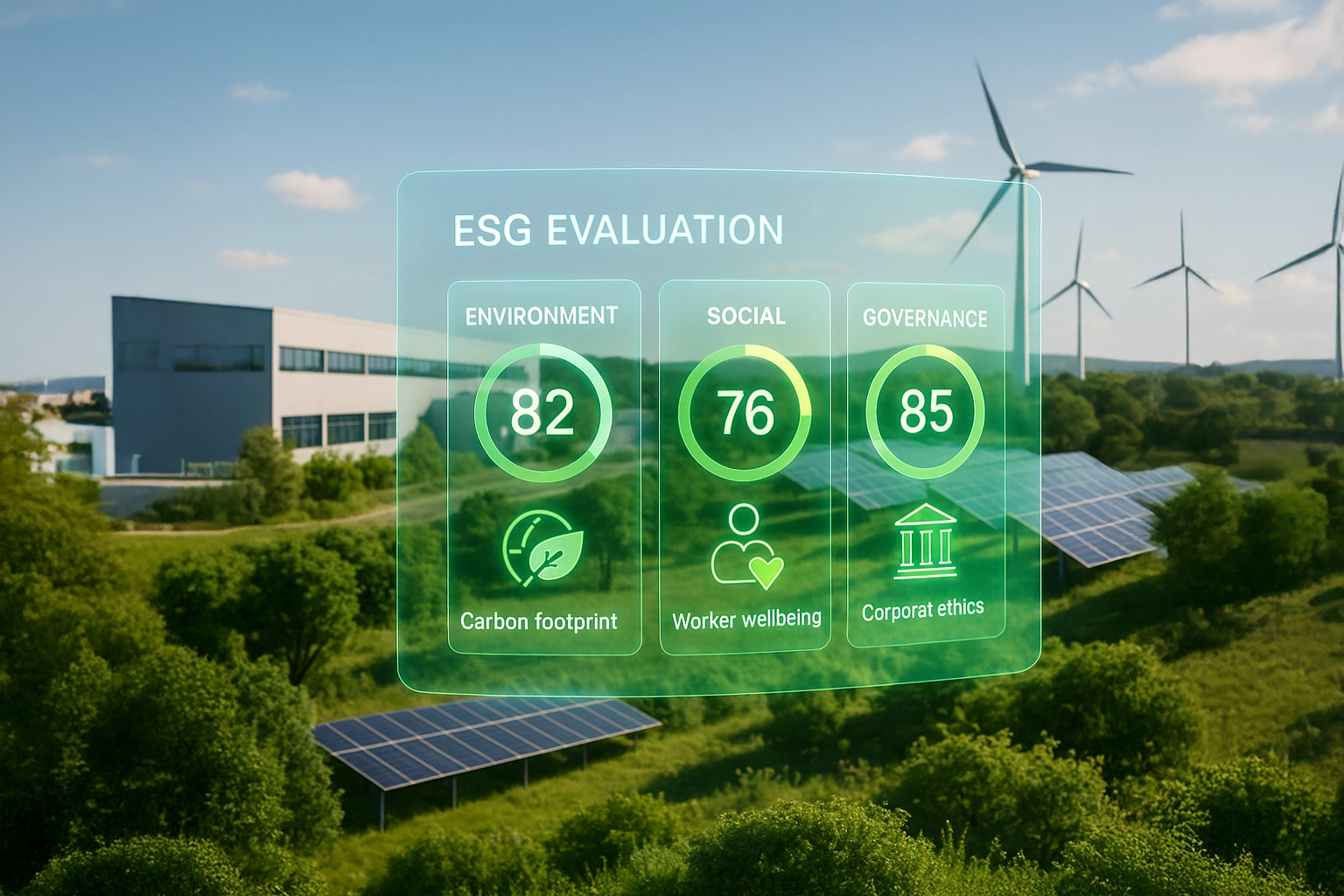Effective Third-Party Governance: A Holistic Approach to Optimized Risk Management

In a context where 38% of companies have experienced major disruptions due to third-party partners over the past three years, third-party governance is becoming a strategic imperative. This reality is even more critical as 90% of organizations now consider third-party risk management a growing priority.
Effective third-party management relies on a holistic approach integrating six key areas of expertise: Legal & Regulatory, Financial Failure Risk, Cybersecurity, Business Ethics, Environmental Compliance, and Human Rights. This structure is especially relevant for the public sector and social housing, where compliance with public procurement regulations demands heightened vigilance.
Experience shows that efficiency is achieved not through audits alone but through collaborative evaluation.
This transformation is underway, yet only 43% of organizations have strengthened their risk criteria for partner assessments to date.
Foundations of Modern Governance
Effective third-party management is built on six essential areas of expertise: cybersecurity and data protection, business ethics, environmental compliance, human rights, and financial and legal compliance. This holistic approach is particularly relevant in the construction sector, where subcontractor certification requires a multi-criteria evaluation.
Collaborative Evaluation and Monitoring
Collaborative evaluation now replaces traditional audits, enabling a better understanding of shared challenges. It follows a continuous process involving:
- Initial identification and evaluation of third parties
- Implementation of measurable performance indicators
- Regular monitoring with predefined checkpoints
- Early-warning mechanisms for emerging risks
Risk Steering
Third-party risk steering relies on continuous collaborative evaluation. This approach helps organizations support their partners in ongoing improvement, particularly in the public sector where public procurement demands mutual engagement.
Digital transformation enhances this shared monitoring through visualization and reporting tools that promote transparency. This evolution is especially visible in the distribution sector, where continuous partner assessment on marketplaces calls for a collaborative method.
Want to deepen your understanding of third-party governance?
Establishing a Continuous Management Strategy
A third-party management strategy must be structured and adaptive. Recent studies show that 70% of organizations are increasing investments in this area, recognizing its critical role in operational resilience.
Regular Evaluation Process
Collaborative evaluation relies on measurable KPIs and defined checkpoints. In the industrial sector, it helps anticipate 43% of potential non-compliance issues, notably for ICPE sites. The process includes:
- Identifying essential compliance criteria
- Defining tailored performance indicators
- Early-warning mechanisms for emerging risks
- Documented follow-up of corrective actions
Continuous partner assessment requires tools adapted to complex challenges. Effective third-party governance now depends on advanced tech solutions to automate and secure the evaluation process.
Technology and Monitoring Tools
Effective third-party governance leverages advanced platforms that include:
- Smart document workflows for automated analysis
- Real-time dashboards for performance tracking
- Early-warning systems to detect anomalies
This digital transformation is highly relevant in the construction sector, where subcontractor certification requires continuous compliance data processing. The frequency and scope of assessments are tailored based on the risk profile of each partner. This helps optimize resources while maintaining strong control over critical relationships.
Embracing a Holistic Approach to Shared Governance
A holistic approach to governance is emerging as a strategic lever to enhance third-party assessment. This comprehensive view integrates all aspects of the partner relationship, creating a more relevant and effective framework.
Integrated Vision and Collaborative Culture
Collaborative third-party management requires going beyond mere document compliance.
- In construction, for example, this means integrating subcontractor certifications into a continuous evaluation process.
- In the industrial sector, it leads to a 43% reduction in potential non-compliances, especially at ICPE sites.
Alignment of values between principals and partners is a key success factor. This cultural dimension is particularly important in the public sector, where transparency and ethics are essential to partnerships.
Social Responsibility and Sustainable Performance
Integrating ESG criteria (Environmental, Social, Governance) into third-party assessments is now essential. Companies must build their strategy around four priority areas:
- Embedding CSR into partner strategy
- Transitioning to a low-carbon economy
- Developing a responsible purchasing policy
- Generating positive societal impact
Implementing measurable KPIs helps assess the effectiveness of this holistic approach. In the industrial sector, this includes tracking ICPE and REACH certifications, ensuring optimal regulatory compliance.
Conclusion
Effective third-party governance is now a strategic pillar in a landscape where 90% of organizations see third-party evaluation as a growing priority. Collaborative assessment combined with continuous monitoring provides a shared and objective evaluation framework.
Quantifiable Benefits
A structured third-party evaluation enables:
- Anticipating disruptions already affecting 38% of companies
- Streamlining documentation via smart workflows
- Ensuring ongoing compliance through measurable KPIs
Sustainable Transformation
Integrating ESG criteria into assessment processes shows that third-party governance goes beyond compliance to become a tool for continuous improvement. This evolution is particularly relevant in demanding sectors like construction, industry, and distribution, where collaborative subcontractor assessment is now essential.
An organization’s maturity is now measured by its ability to transform evaluation processes into a continuous improvement system that creates shared value.
These articles might interest you
-
 14 July 2024Duty of vigilance: A recent international report warns of companies’ non-compliance, particularly in FranceSolutionsThe World Benchmarking Alliancehas just published a report analyzing the practices of the 2,000 most important companies on the planet in terms of human rights due diligence. The “alarming” results show companies’ delay in this area, and French companies are far from being an exception to the rule. The countdown has begun before the European […]
14 July 2024Duty of vigilance: A recent international report warns of companies’ non-compliance, particularly in FranceSolutionsThe World Benchmarking Alliancehas just published a report analyzing the practices of the 2,000 most important companies on the planet in terms of human rights due diligence. The “alarming” results show companies’ delay in this area, and French companies are far from being an exception to the rule. The countdown has begun before the European […]Read more
-
 04 April 2025Understanding Key Financial Indicators for Evaluating Your Third-Party PartnersSolutionsIn an economic environment where over 60% of European companies have faced operational incidents linked to their third-party partners, as highlighted by the European Central Bank in its Annual Report on Supervisory Activities, understanding and mastering key financial indicators has become essential for evaluating the stability of your business partners. These third-party assessment tools help […]
04 April 2025Understanding Key Financial Indicators for Evaluating Your Third-Party PartnersSolutionsIn an economic environment where over 60% of European companies have faced operational incidents linked to their third-party partners, as highlighted by the European Central Bank in its Annual Report on Supervisory Activities, understanding and mastering key financial indicators has become essential for evaluating the stability of your business partners. These third-party assessment tools help […]Read more
-
 03 February 2025TPRM vs Traditional Risk Management: A Critical Comparison for Modern BusinessesSolutionsIn a market valued at $8.3 billion in 2024 and projected to reach $18.7 billion by 2030, third-party governance is becoming a strategic pillar for organizations. In response to the rapidly evolving business world, Third Party Risk Management (TPRM) is profoundly transforming traditional risk management practices. The traditional approach, focused on internal processes, is no longer sufficient […]
03 February 2025TPRM vs Traditional Risk Management: A Critical Comparison for Modern BusinessesSolutionsIn a market valued at $8.3 billion in 2024 and projected to reach $18.7 billion by 2030, third-party governance is becoming a strategic pillar for organizations. In response to the rapidly evolving business world, Third Party Risk Management (TPRM) is profoundly transforming traditional risk management practices. The traditional approach, focused on internal processes, is no longer sufficient […]Read more
-
 14 March 2025Integrating ESG Criteria into Supplier EvaluationSolutionsIntegrating environmental, social, and governance (ESG) criteria into the evaluation of third-party partners has become essential for companies seeking to strengthen their operational resilience and promote sustainable development. These criteria make it possible to analyze not only economic performance but also the environmental and social impact of business relationships. According to a recent McKinsey study, […]
14 March 2025Integrating ESG Criteria into Supplier EvaluationSolutionsIntegrating environmental, social, and governance (ESG) criteria into the evaluation of third-party partners has become essential for companies seeking to strengthen their operational resilience and promote sustainable development. These criteria make it possible to analyze not only economic performance but also the environmental and social impact of business relationships. According to a recent McKinsey study, […]Read more
